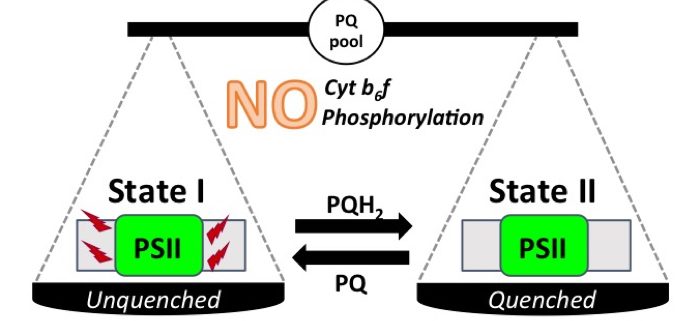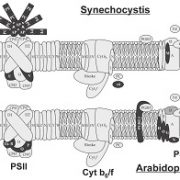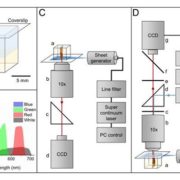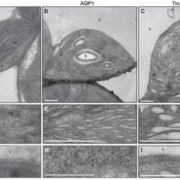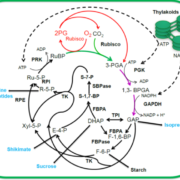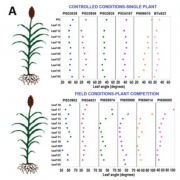Balancing photosystem activities: different mechanisms in plants and cyanobacteria
Calzadilla et al. investigate the mechanism underlying state transitions in cyanobacteria. Plant Cell https://doi.org/10.1105/tpc.18.00159
By Pablo I. Calzadilla and Diana Kirilovsky, Institute for Integrative Biology of the Cell, CEA, CNRS, Université Paris-Sud, Université Paris-Saclay, Gif sur Yvette, France
Background: Plants, algae, and cyanobacteria harvest solar energy and convert it into chemical energy through photosynthesis. The photosynthetic apparatus involves two pigment protein complexes (the photosystems: PSII and PSI), which capture solar light and perform photochemical reactions, and a third complex (cytochrome b6f), which participates in electron transport between the photosystems. Photosystem activities must be balanced under fluctuating environmental conditions. This balance is achieved by a mechanism called state transitions, which is regulated by the redox state of the plastoquinone (PQ) pool, a membrane-soluble electron carrier between PSII and cytochrome b6f. In plants and green algae, the redox sensor of the PQ pool is cytochrome b6f, which interacts with a specific kinase of the major membrane chlorophyll antenna known as Light Harvesting Complex II. The molecular mechanism of cyanobacterial state transitions and its transduction signal are still a matter of discussion, although many hypotheses have been proposed.
Question: We aimed to revisit cyanobacterial state transitions, focusing on the signal transduction pathway and the membrane changes involved in its mechanism.
Findings: The PQ pool redox state also regulates cyanobacterial state transitions. However, using Synechocystis PCC 6803 and Synechococcus elongatus as model organisms, we clearly demonstrate that cytochrome b6f is neither the sensor nor the signal transducer in this process. In addition, construction and characterization of kinase and phosphatase Synechocystis mutants allowed us to show that there is no specific phosphorylation reaction that participates in cyanobacterial state transitions. These results were confirmed using kinase and phosphatase inhibitors. Thus, the signal transduction pathways involved in state transitions in cyanobacteria and plants (green algae) are completely different. Finally, we provide evidence suggesting that membrane changes at the level of PSII play an important role in cyanobacterial state transitions.
Next steps: Our results provide the basis for a new research hypothesis in cyanobacterial state transitions. The next step will be to identify the PQ pool sensor and the types of changes that occur at the level of PSII.
Pablo I. Calzadilla, Jiao Zhan, Pierre Sétif, Claire Lemaire, Daniel Solymosi, Natalia Battchikova, Qiang Wang, and Diana Kirilovsky. (2019). The Cytochrome b6f Complex is Not Involved in Cyanobacterial State Transitions. Plant Cell 31: xxx; DOI: https://doi.org/10.1105/tpc.18.00916
Key words: Photosynthesis, Cyanobacteria, State transitions, Light acclimation


